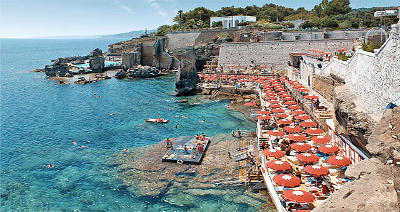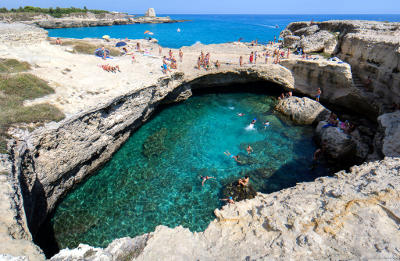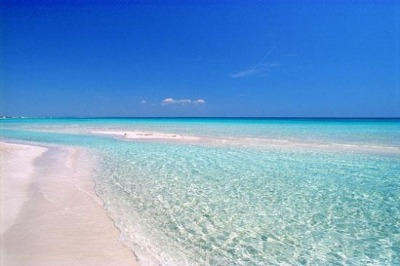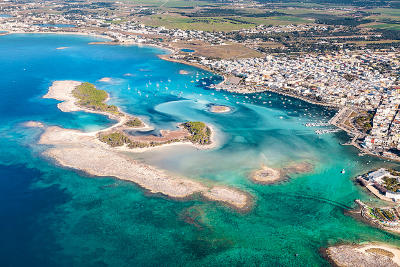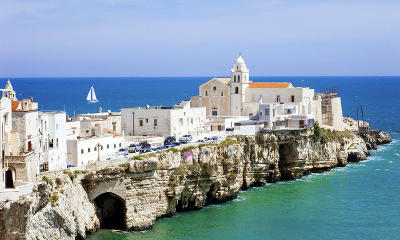 Vieste in Puglia on the Gargano.
Vieste in Puglia on the Gargano.
The Gargano is considered the spur of the boot of Italy , a karst promontory that extends towards the Adriatic Sea and the Balkan coasts to which in prehistoric times it was probably connected, a mountainous territory dominated by Monte Calvo (1056 meters) with basins , caverns and grottoes, two large lagoons (Lake Lesina and Lake Varano) separated from each other by Mount Elio.
The geographical boundaries of the Gargano towards the land are well delimited by the Candelaro river and the plain below, with steep slopes, in an independence that has allowed the area to be preserved in its natural state, maintaining the ancient traditions and becoming one of the main tourist areas in Italy and pride of Puglia .
The Gargano promontory is a corner of the Mediterranean where nature is the absolute protagonist , an ancient and sacred reality that fascinates with its traditions and stuns with the colors and scents of its landscapes.Its green lung, within the Gargano National Park , is the Umbra Forest (from shady in Latin, nothing to do with the other Italian region), 11 thousand hectares of natural area with beeches, yews, Aleppo pines and other monumental trees of hundreds of years, populated by Gargano roe deer, fallow deer, mouflons and 170 nesting species of birds, including many birds of prey.

In addition to being a fantastic natural place, the Gargano has always been an area of profound sacredness .
Just think of Monte Sant'Angelo, where the sanctuary dedicated to San Michele Arcangelo stands , who according to legend appeared around 490 AD with the desire to choose a cave as his own earthly home.Or San Giovanni Rotondo, where thousands of devotees and pilgrims have venerated the figure of Padre Pio while alive and now pay homage to his tomb and the cell where he lived and prayed; to the many sanctuaries and abbeys along the Via Sacra Langobardorum , which connected the pilgrimage across the Via Francigena to the Holy Land.
A lot of mountains but also a lot of sea , with towns and villages of whitewashed houses stretched out on the Adriatic, between golden beaches and rocky cliffs: Vieste and the great stack of Pizzomunno, Rodi Garganico , the bay of Pugnochiuso , Peschici , San Menaio, the bay of the Zagare with the stacks of Mergoli, Mattinata and many other splendid places that emerge among olive groves and pine forests.
Beaches of the Gargano
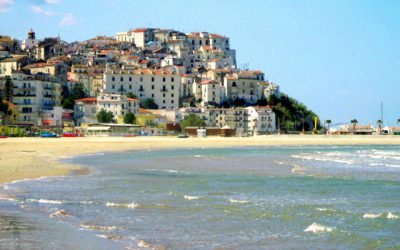
The wonderful coast of the Gargano , in the northernmost part of Puglia, is made up of 150km of enchanting bays and jagged cliffs , where there is no shortage of picturesque villages overlooking the sea. Here everyone can find the beach that best suits their taste and needs, you just have to choose it among the many jewels of nature available.
The northernmost stretch of coastline, the one that runs along the brackish lakes of Lesina and Varano , has fine sand and is perhaps the most suitable for families with small children, quite quiet.Continuing on, you reach Rodi Garganico , in a strip of coast that is still flat but already allows a glimpse of the heights of the Gargano National Park which slopes down towards the sea. The ancient fishing village dominates the beach, which has received the Blue Flag several times for the quality of its sea , but also for its accessibility, respect for the environment and the services offered.

In Vico del Gargano , in the bay of San Menaio , you can find a wide beach with fine sand, equipped with bathing establishments and restaurants that allow you to taste the very good Apulian cuisine just a few steps from the waves.
The enchanting Peschici , perched on its promontory, is a short distance away and offers several sandy beaches of various sizes, also with bathing establishments for the numerous nearby accommodation facilities.
There are many bays between Peschici and Vieste , not difficult to reach, where among the pines and cliffs it is easy to find small hotels, campsites and kiosks of all kinds: Zaiana, Calalunga, Manacore and Manaccora are the most fascinating and popular.
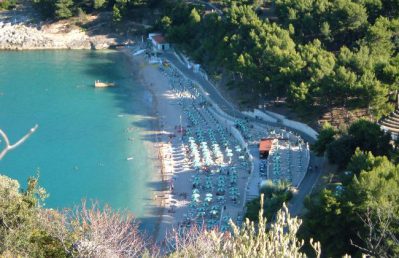
Along this stretch of coast the landscape is characterized by traditional trabucchi , the fishing structures built in wood that stretch out over the sea with nets, which today we try to safeguard and enhance because they are an important part of the historical, landscape and cultural heritage of the Gargano community. , especially in the territory of Vieste, the most visited place by tourism in this territory of Southern Italy.
In Vieste, tourists, but also local inhabitants, flock to the medieval-style historic center built on the promontory of Punta San Francesco , while in the port there is a continuous coming and going of boats that take you to visit the many coastal caves in the surroundings .But the most famous image of Vieste is that of the Pizzomunno beach, with its stack of over twenty meters . Other equally spectacular beaches are the bay of San Felice, with its arch in the rock overlooking the sea ; the Bay of Campi, in front of which there is a desert island; Pugnochiuso , splendid but with various resorts that make it always crowded; Gattarella, magnificent and luxuriant, also crowded with people for the remarkable accommodation facilities.
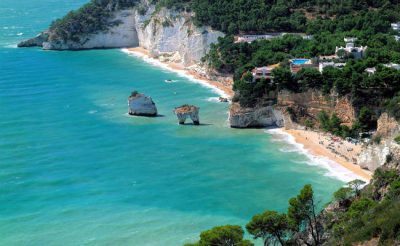
Continuing to descend towards the south, the territory of Mattinata offers one of the most precious treasures of the coastal Gargano : the Baia delle Zagare , an extraordinary beach of about 1km between the inlets overlooking the sea, with two beautiful stacks right in front.
Also suggestive is the Vignanotica beach , known as Baia dei Gabbiani , between the limestone walls of the cliff on which there are caves; if you arrive at the beach but you have nothing with you to protect yourself from the sun, some establishments can rent you umbrellas.
Continuing along the coast there is Manfredonia , a town of over 50 thousand inhabitants with a well-equipped tourist port on the gulf of the same name, which has a very long sandy beach. A visit to the city allows you to admire the Swabian-Angevin castle and many religious and civil buildings of particular architectural interest.
What to see in the Gargano
The beautiful peninsula of Gargano in Puglia , an important tourist destination, has many places of interest to see , from the natural areas that have been part of the national park since 1991 to the coast with fine sandy beaches, rocky coasts and caves, to the many villages of low houses. and white with narrow and winding streets.
Vieste
Vieste is a picturesque town located on the extreme eastern part of the Gargano , of ancient origins which was a Greek colony, a Roman municipality and in the Byzantine-medieval period, a bishop's seat with the construction of the beautiful Cathedral .
In 1065 it was conquered by the Normans and in 1240 Frederick II had the castle built on the top of the small promontory, from where it dominates the town, the beaches and the beautiful hills rich in vegetation.Nearby are the numerous early Christian necropolises , the Sanctuary of Santa Maria di Merino and the beach of Pizzomunno , a famous seaside resort not far away.
Closed fist

Pugnochiuso , on the bay of the same name on the eastern coast of the Gargano, is a seaside resort in the district of Vieste, overlooking a crystalline sea among forests of beech, pine and olive trees, with a well-equipped holiday center where you can practice any activity between sea and nature.
Peschici
Peschici is a fairytale town overlooking the sea , with the ancient part of the town consisting of houses with a domed roof of oriental origin and a castle of medieval origin that was part of the defensive constructions of the Swabians.
Along the road that leads to the bay below, with the most modern part of the town where the tourist port and the golden beach are located, there are caves dug into the rock still inhabited today, in a truly suggestive landscape.
Rodi Garganico

On a rocky promontory among olive and citrus trees, Rodi Garganico is a picturesque seaside resort with ancient maritime traditions. In 1538 it had the first Capuchin convent of the Gargano , which still today crowns the town full of historical memories.
Noteworthy is the Sanctuary of the Madonna della Libera, which owes its origin to the sacred icon stolen by the Venetians in 1453 in Constantinople.
San Nicandro Garganico
San Nicandro Garganico is one of the most populous municipalities of the Gargano promontory , in an area a little more inland than the coast at about 224 meters above sea level, characterized by two hundred cisterns for collecting rainwater.
In a dominant position stands the castle of medieval Norman-Swabian origin , which later became the Della Marra feudal lords, with square towers at the corners to which circular bastions were added over the centuries.Nearby there are some important caves of karst origin and on the coast Torre Mileto, a town that takes its name from the medieval watchtower between the lakes of Lesina and Varano, the closest point to the Tremiti Islands .
Lesina and Varano lakes

Lake Lesina has an area of 51kmq and is separated from the sea by a coastal strip of about one kilometer, with which it communicates through two channels. It is renowned for its eel fishing and archaeological finds from the Neolithic, Bronze and Iron Ages have come to light along its banks.
Also the lake of Varano , of about 36kmq is separated from the sea by a thin strip of sandy dunes and connected by two navigable canals. It is a lake full of fish fed by underwater springs and on its banks it is thought that the ancient Dauna city of Uria rose, mentioned by many important Latin authors, which is believed to have been submerged by the lake following an earthquake.
Monte Sant'Angelo
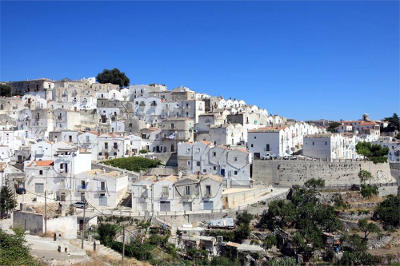
Monte Sant'Angelo is one of the most religious places in Puglia and also among the highest towns, at 796 meters above sea level. It is famous for the Sanctuary of San Michele Arcangelo , built around the mid-6th century following the miraculous apparition, with a characteristic octagonal bell tower and bronze doors cast in Constantinople in the 11th century.
Another unique thirteenth-century monument, in front of the bell tower, is the Tomb of Rotari . The castle with the imposing pentagonal tower was built towards the middle of the 11th century by Roberto il Guiscardo, founder of the Kingdom of Sicily, and later restored and embellished by Frederick II.Other works of architectural interest are the Romanesque church of Santa Maria Maggiore, the church of San Benedetto with the adjoining monastery, the medieval abbey of Santa Maria di Pulsano and the church of Santa Maria degli Angeli.
Umbra Forest
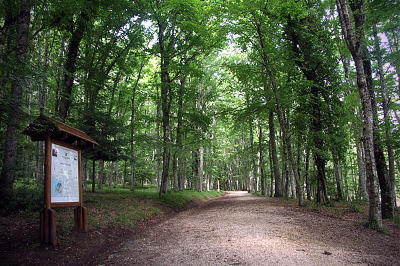
The Umbra Forest : about 12 thousand hectares of forest in the central-eastern part of the Gargano , crossed by 23km of roads, a dense network of footpaths for lovers of woods and trekking, along paths of interesting naturalistic value.
In this area grow beeches, maples, firs, Turkey oaks, while descending towards the sea the Mediterranean scrub prevails with pines, cypresses, mastic trees, lime trees, holm oaks. Among the fauna, roe deer, fallow deer, red deer and many other animal species prevail, especially birds.
San Giovanni Rotondo
San Giovanni Rotondo is a destination for pilgrimages from all over the world , its religious history begins with the arrival of Padre Pio of Pietralcina at the Convent of the Capuchins. Much of the tourist flow is due to devotion to the saint and is concentrated in the Church of Santa Maria delle Grazie and in the crypt where his remains are found, but in the area there are many other churches and buildings of medieval origin and from more eras. recent.
Manfredonia

Manfredonia is a seaside town founded in 1256 by King Manfredi , it has an excellent port and beautiful beaches that develop along the coast.
Among its monuments, the Angevin Castle and the church of San Domenico are noteworthy, but in the surroundings you must not miss the ancient town of Siponto , as well as for the beautiful beaches also for the archaeological area, for the Romanesque churches of Santa Maria Maggiore in Siponto (with a crypt from the 10th century) and San Leonardo di Siponto.
What to see near the Gargano

About 25km from the northern coast of the Gargano are the Tremiti Islands , an archipelago consisting of the islands of San Nicola, San Domino, Capraia, the inaccessible rocks of Cretaccio and La Vecchia and the island of Pianosa, about twenty kilometers from the others. islands.
They can be reached from the main ports of the Gargano such as Manfredonia, Vieste, Peschici and Rodi Garganico with boats and hydrofoils (absolutely without cars), but the times and frequencies are different according to the seasons, certainly more frequent in summer.
San Severo is an interesting wine center of the Tavoliere a short distance from the innermost municipalities of the Gargano peninsula, with a medieval historic center surrounded by more modern districts.
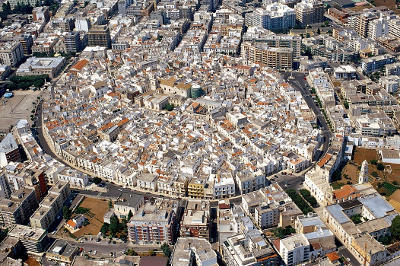
About twenty kilometers further south is Lucera, a city dear to Frederick II of Swabia . Here you can see the gothic Cathedral Basilica of 1302, the Swabian Castle of the 13th century, the Roman Amphitheater among the oldest in southern Italy and a Greco-Roman monument of the 1st century BC very similar to that of Pompeii , as well as many others. churches and historic buildings.
Another 20km to the south-east is Foggia, the provincial capital and Capitanata , with the Romanesque Cathedral rebuilt in Baroque style in the 1700s, the ancient medieval gate and the Arch of Frederick, the Church of the Crosses and the Church of San Francesco Saverio and interesting museums.
